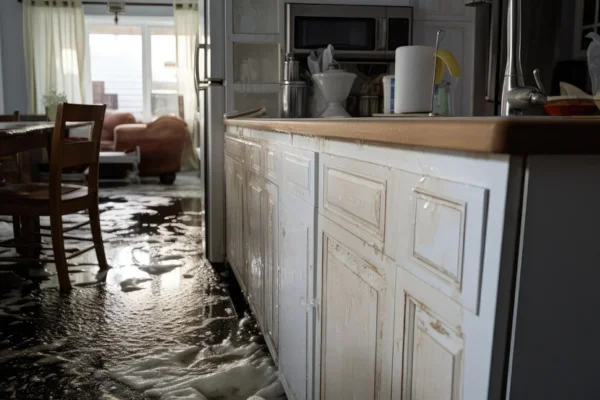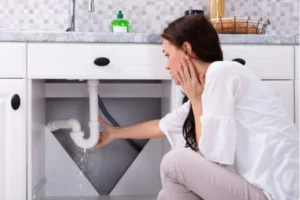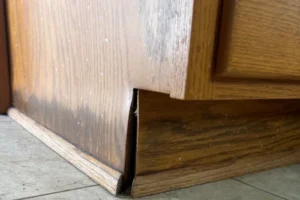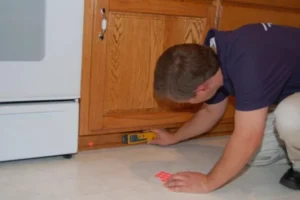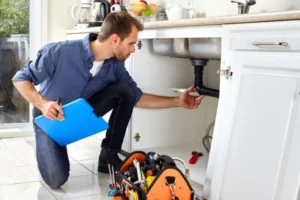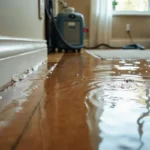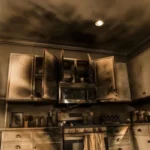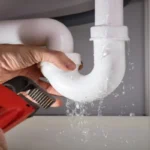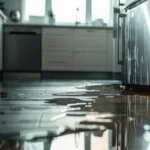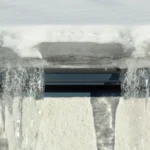The kitchen is often the central gathering place in your home. But because it’s also one of the busiest areas with constant water use, it’s especially vulnerable to hidden leaks, appliance malfunctions, and excess humidity. Water damage to kitchen cabinets can be costly, stressful, and disruptive to your daily life. Often, it occurs quietly, whether from leaking pipes, dishwasher overflows, or excess moisture, and can compromise both the aesthetics and structural integrity of your kitchen.
Recognizing the causes, symptoms, and solutions for your kitchen cabinet water damage is essential for maintaining a functional, safe, and attractive kitchen. Whether facing minor issues or more significant damage, knowing how to prevent and repair water damage can save you time, money, and stress. Let’s take a closer look at what you should do when faced with kitchen cabinets water damage issues.
Common Causes of Kitchen Cabinets’ Water Damage
Kitchen cabinet water damage typically originates from a few key sources. Understanding these causes allows homeowners to take proactive steps to protect their kitchen and prevent costly repairs.
Leaking Kitchen Pipes
Leaking pipes are a frequent cause of water damage. Even a small drip can gradually weaken cabinets, causing swelling, warping, or mold growth. Common reasons for leaks include loose fittings, corrosion, and aging pipes.
Regular inspections under sinks and behind appliances can help you spot early signs of moisture or discoloration. If you detect leaking kitchen pipes, address the issue promptly to prevent further damage and ensure your kitchen remains fully functional.
Dishwasher Leaks and Overflows
Dishwashers are convenient, but they can also be a source of water damage. Leaks can result from worn door seals, loose hoses, or improper installation. A dishwasher leaking on the floor may allow water to seep into cabinets, causing wood to warp and encouraging mold growth.
Similarly, a flooded dishwasher can significantly damage cabinets. Immediate action—shutting off water, cleaning up standing water, and drying the area—is essential to minimize damage. Regular maintenance, including inspecting hoses and connections, can prevent future issues.
High Humidity and Moisture Accumulation
Even without leaks, excessive humidity or poor ventilation can damage kitchen cabinets. Moisture can cause wood to swell, warp, or develop mold over time. To prevent kitchen cabinet water damage, consider the following measures:
- Use a dehumidifier in your kitchen if the humidity is high.
- Ensure proper ventilation while cooking.
- Regularly check for condensation or small leaks.
By controlling moisture, or even a flooded kitchen, you can preserve your cabinets and maintain a healthy environment.
Signs of Kitchen Cabinets Water Damage
Early detection is crucial to minimizing damage and repair costs. Watch for these warning signs:
Warped or Swollen Cabinet Doors
Cabinet doors may not close properly, exhibit bulging edges, or show gaps between the frame and door. Prompt attention prevents further structural issues and ensures your kitchen remains in good working order.
Discoloration or Stains on Cabinets
Dark spots, fading, or unusual discoloration indicate exposure to water. Taking immediate action, such as contacting water damage repair services, helps prevent further damage.
Soft or Spongy Wood Surfaces
Press the wood gently to test for softness. If you find spongy or weakened areas, check for leaks or dishwasher overflows. Assess whether the damage is localized or widespread.
Musty Odors Around the Cabinets
A musty smell is often a sign of mold or mildew, indicating prolonged exposure to moisture. Address leaks promptly and dry cabinets thoroughly. Cleaning surfaces with a vinegar solution can help eliminate odors and prevent mold from returning.
Preventing Kitchen Cabinets Water Damage
Proactive prevention is key to protecting your kitchen. Regular inspections, proper ventilation, and swift response to spills can save time and money.
Regular Inspection of Pipes and Appliances
Here are three key areas to check:
- Check for leaks under sinks and around appliances.
- Inspect dishwasher and refrigerator hoses for wear or cracks.
- Monitor water pressure to prevent pipe bursts.
Proper Ventilation and Humidity Control
Regular inspections of pipes and appliances help catch leaks early; however, proper ventilation and humidity control are equally important for protecting your kitchen cabinets from water damage. Use exhaust fans while cooking, open windows when possible, and keep humidity levels below 50% with a dehumidifier if needed.
Quick Response to Leaks and Spills
Here are three quick steps to take:
- Identify the source of the leak and shut off the water.
- Clean up water immediately using absorbent cloths.
- Dry the area thoroughly with fans or dehumidifiers.
Using Water-Resistant Materials for Cabinets
Opt for cabinets made from water-resistant materials, such as plywood with a protective veneer, marine-grade wood, or laminate finishes. These options repel moisture while maintaining kitchen aesthetics.
How to Repair Water-Damaged Kitchen Cabinets
Prompt action can prevent further damage. Minor repairs can often be handled by homeowners, but severe issues require professional assistance. Kitchen cabinets water damage is not something to ignore or delay addressing!
DIY Repairs for Minor Cabinet Damage
If the damage to your kitchen cabinets is minor, you can often handle repairs yourself before the issue worsens. Here’s a step-by-step approach:
- Empty the cabinets to allow proper air circulation.
- Dry the area thoroughly using fans or a dehumidifier.
- Wipe down all surfaces to remove moisture and discourage mold growth.
- Sand warped or bubbled spots lightly to smooth the surface.
- Apply wood filler to cracks or holes for a seamless finish.
- Repaint or stain the repaired areas to match the existing cabinet finish.
By taking these steps promptly, you can prevent further deterioration and restore both the appearance and strength of your cabinets.
Replacing Damaged Cabinets
If damage is extensive, replacement may be necessary. Measure carefully, select suitable cabinets, remove the old units, and install the new ones securely to maintain both functionality and appearance.
When to Call Professional Water Damage Repair Services
While minor water damage can often be managed with DIY repairs, significant swelling, structural damage, or mold growth necessitates professional intervention. Experts have specialized tools to assess and repair damage efficiently, preventing further problems.
Long-Term Maintenance and Protection Tips
Sustained vigilance helps you prevent recurring water damage:
Routine Kitchen Inspections
Although you may not think about it often, conducting routine kitchen inspections can save you from costly repairs and extensive damage down the line:
- Check under sinks and around appliances for leaks.
- Inspect cabinet bases and surfaces.
- Examine seals and hoses on dishwashers and refrigerators.
Installing Leak Detectors or Water Alarms
Leak detectors provide early alerts to prevent extensive damage. Place them near potential sources, such as under sinks or near dishwashers, and check batteries regularly.
Cleaning and Sealing Cabinet Surfaces
Follow these steps for effective care:
- Clean with mild detergent and a soft cloth.
- Dry thoroughly to ensure no moisture is trapped.
- Apply a protective sealant to repel moisture.
Preventing Future Dishwasher Leaks
To effectively prevent future dishwasher leaks, it’s essential to conduct regular inspections and maintenance checks:
- Inspect hoses and connections monthly.
- Clean filters and ensure doors seal properly.
- Use drip trays where necessary to catch accidental leaks.
Kitchen Cabinets and Water Damage Repairs- Final Thoughts
By staying proactive, homeowners can significantly reduce the risk of water damage to their kitchen cabinets. Regular inspections, immediate attention to leaks, and proper maintenance are crucial. Minor issues can often be handled DIY, while more severe damage warrants professional repair to safeguard your kitchen’s structure and appearance. Investing in prevention and timely repair not only protects your cabinets but also your home’s overall value and functionality.
Prevent Further Damage – Schedule a Professional Kitchen Water Damage Inspection Now! Let us help you with all your kitchen cabinets water damage concerns today!

